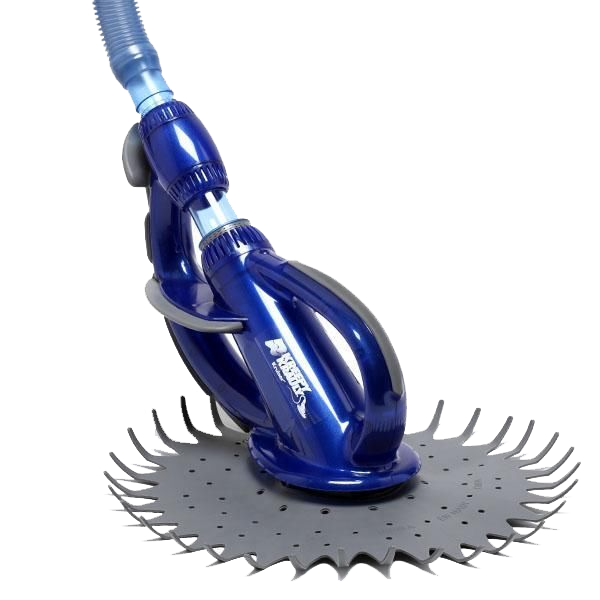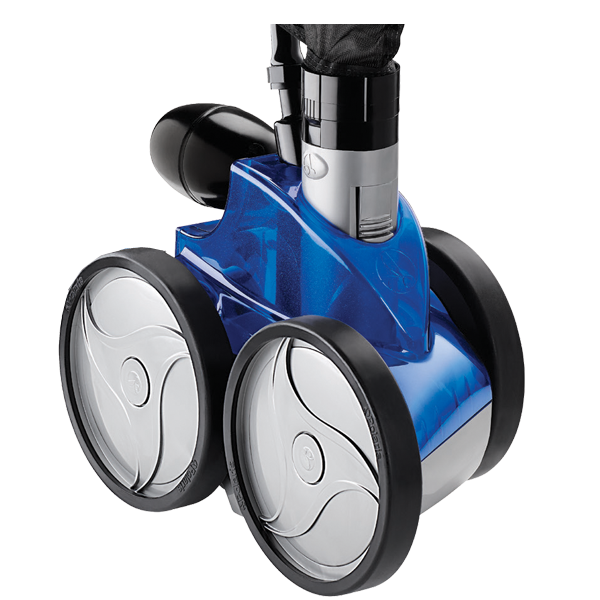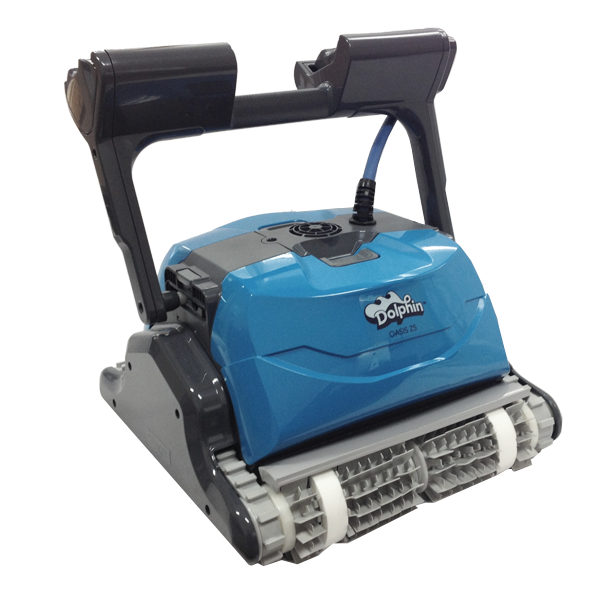Key Pool Cleaner Differences
 |
 |
 |
|
| Suction-side Cleaner | Pressure-side Cleaner | Robotic Cleaner | |
|---|---|---|---|
| Uses Pool Pump | |||
| Uses Booster Pump | |||
| Built-in Filter | |||
| Built-in Motor | |||
| Scrubs Pool Surfaces | |||
| Collects Small Particles | |||
| Energy Efficient |
Not all pool cleaners are created equal. Advances in robotic technology have enabled us to offer many advantages to antiquated cleaning traditions that can truly make a difference in the quality of your pool experience.
 |
Robotic CleanerRobotic pool cleaners are engineered with the strongest pumps (up to 85 GPM) and finest filtration in the industry (down to 2 microns). They remove more debris and finer particulate to keep pools physically cleaner, substantially reducing the amount of chemicals needed. It all adds up to fewer chemicals for a healthier clean Robotic cleaners are programmable for different pool sizes and are designed to complete a predetermined cycle of cleaning and then shut off. They have long cords that must be plugged into an electric outlet. After use, pool owners must remove the unit's filter bag and clean or replace it with a disposable robotic cleaner filter bag. As self-contained pool cleaners, robotic models are probably the most energy-efficient. Filter and motor are built in. Robotic pool cleaners are the most effective of the three types because they can pick up even tiny particles from the pool floor, steps, walls, and waterline.
|
 |
Suction-side CleanerSuction Side and even Manual Pole Cleaning both lack optimal pool water mixing, leaving stagnant water areas that actually demand even more chemicals to stay clean. Suction Side Cleaners also use more energy as they require your pool's filter pump to run during their cleaning cycle. They also don’t match the finest water filtration and mixing of Aquabot Robotic Cleaners which deliver on the promise of fewer chemicals and a healthier clean. The side-suction pool cleaner is next in line as far as energy and cost efficiency. Although, side-suction cleaners are not nearly as efficient as robotic pool cleaners since they run on your pool filtration system. You can recognize these cleaners as they are the ones that plug into a wall port underwater on the side walls. Robotic pool cleaners run on 110v wall electricity and are controlled by a converter/transformer box. Side-suction cleaners run strictly on the pool’s main pump causing more draw of electricity, as well as a draw on vacuum power from the pool’s jets. Meaning, when the pool filter basket fills up with debris, you will usually notice a drop in water flow unless you monitor it daily. Although side-suction cleaners are built with fewer components, they usually tend to wear down quicker and need more frequent repairs. Most of the time, the cost to repair the unit costs almost as much as buying a brand new one.
|
 |
Pressure-side CleanerPressure cleaners provide better water mixing capabilities than suction side cleaners but still leave some stagnant water areas that demand more chemicals to stay clean. Pressure Cleaners also use energy due to added booster pumps and they don’t match the water mixing or the finest filtration of Aquabot Robotic Cleaners which deliver on the promise of fewer chemicals and a healthier clean. The booster pump pool cleaner is easily the least efficient of the three types of cleaners. Not only do these cleaners run off power fed by your pool’s filtration system, but they need extra power to run which is supplied by an external 3-4 hp electric motor, or “booster pump.” The extra draw from the booster pump has proven to easily add some significant cost to running your pool over a yearly basis. For this reason, when most people do the research, they find that the robotic pool cleaner is by far the most efficient. When a new pool is constructed, the pool store that helped supply materials is usually contracted with a booster-pump or side-suction cleaner manufacturer to offer free pool cleaners. These types of cleaners are typically half the price of a robotic cleaner as they are much simpler in design. The problematic side to these units is the cost to have them repaired almost exceeds the cost of a brand new cleaner.
|




